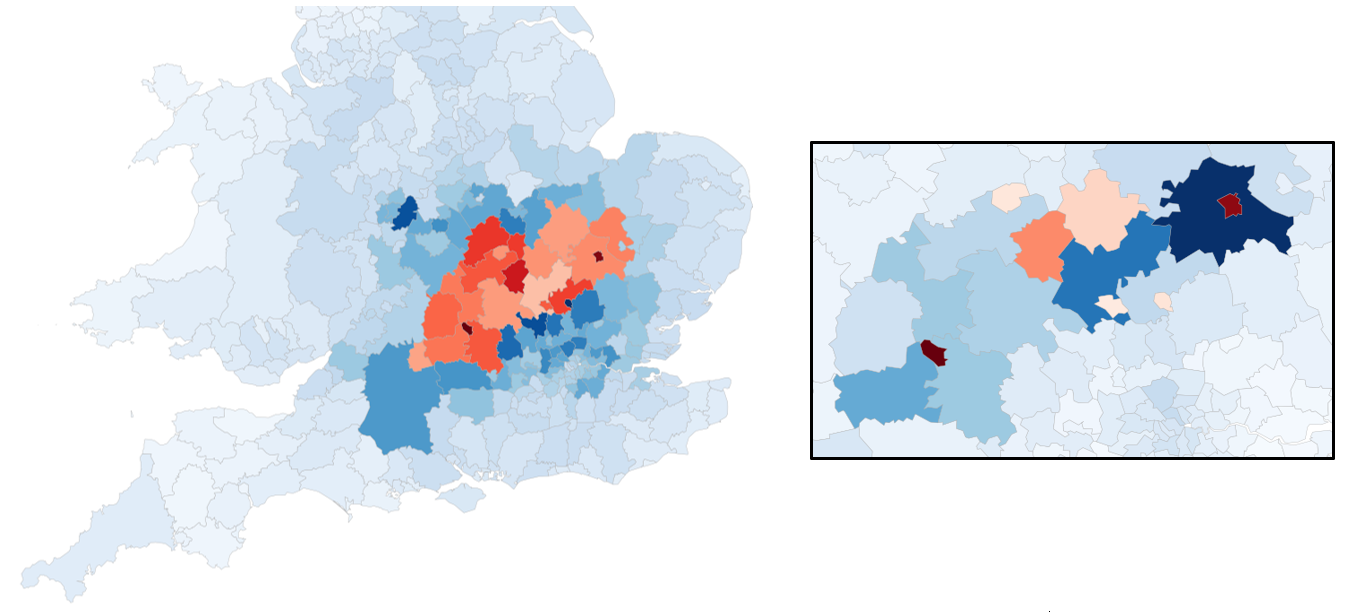THEMES
DEMOGRAPHICS
DEMOGRAPHICS
INTRODUCTION
Scenario projections provide the data needed to estimate future demand. Data acquisition and cleaning are dealt with in models which draw on estimates published by the UK’s statistical agencies as well as Census data. These are made consistent and used in models which produce individual level population and household estimates at small area scale for the whole country.
An assignment algorithm places people in to households and a projection model produces estimates of the future size and distribution of population under different scenarios. The resulting output from this suite of models is extremely detailed data on the location and composition of population and of households, offering information about demographic attributes needed to derive demand estimates.
The result is data outputs which provide insight in to local area demand which has not previously been available on a national scale. These households are then allocated to individual dwellings using the Urban Development Models, providing further detailed estimates on the precise location of demand.

Illustration of the estimation process: population estimates are produced at Middle Super Output Area scale, Households at the Output Area scale. These are then assigned to residential dwellings to produce high resolution demand estimates.
DEMOGRAPHICS
RESULTS

Figure 1: (a) An illustration of headline population projections for Newcastle under a principal, high and low variant; and (b) a projection of both people and households for Newcastle under the principal variant.

Figure 2: Example output showing (a) population growth in tower hamlets between 2011 and 2021; and (b) the age sex structure of the Bangladeshi population in 2021. Source: Lomax, N. and Smith, A P. (2017) Microsimulation for demography. Australian Population Studies, 1(1): 73-85.

Figure 3: Example output showing change in housing density in Exeter in 2039, compared with 2011.

Figure 4: Example of two population change scenarios within the CaMkOx Arc (red is gain, blue is loss): (a) new towns scenario; and (b) expansion of existing centres.
DEMOGRAPHICS
APPLICATIONS
The high resolution population and household estimates and projections can be used in a huge range of applications where the demand for infrastructure or services needs to be estimated. The outputs from the demographic models inform the infrastructure models produced by the ITRC, but could also be of use for forecasting demand for jobs, school places and housing. Indeed wherever policymakers, local authorities, construction or infrastructure companies need to make planning and investment decisions, demographic inputs are needed.
Results from the demographic models have been used by the National Infrastructure Commission to assess the potential employment and population distribution for English cities under different transport and housing scenarios. This analysis was used in the evidence published in the National Infrastructure Assessment.
The models which make up the demographics theme of ITRC are open source and allow anyone with appropriate technical expertise to undertake scenario projections. This has been made more user friendly through the development of the SIMIM model, complete with a geographical user interface which allows users to set assumptions about local area changes in housing and employment.
The model is hosted on the Data Analytic Facility for Natonal Infrastructure and has informed scenario planning around the Arc.


Screenshots from the SIMIM Geographical User Interface, hosted on the DAFNI website. These show (a) the configuration page where a user an set assumptions about house building and job growth in an area; and (b) the interactive results page.
DEMOGRAPHICS
MODELS
UKCensusAPI
Demographic data from census, mid-year estimates and other data sources is collected and made consistent by the UKCensusAPI mode. UKCensusAPI feeds data directly to ukpopulation and to household microsynthesis.
ukpopulation
Official projections for the UK are downloaded and made consistent by the ukpopulation package, which provides the headline constraint data for the baseline scenarios.
household_microsynth
Household microdata are created using the household microsynthesis package which combines census data on occupied households, communal residences, and unoccupied dwellings to generate a synthetic population of dwellings classified in a number of categories. Data are fed from UKCensusAPI.
humanleague
Population microdata are estimated using the humanleague package. Data are fed from UKCensusAPI.
microsimulation
The microsimulation package takes the population and household synthetic data and projects these forwards in tome, constraining if required to data from ukpopulation. Inputs from household microsynth, humanleague and constraints from ukpopulation.
simim
Custom scenarios can be created in simim, a spatial interaction model which takes in to account user assumptions about the development of housing, transport connectivity and the strength of the local economy in a specific region. Inputs from humanleague. Output can replace ukpopulation constraints.
DEMOGRAPHICS
PUBLICATIONS
ukpopulation: unified national and subnational population estimates and projections, including variants
UK statistics agencies (ONS, StatsWales, NRScotland and NISRA) produce mid-year population estimates (MYE), national population projections (NPP), and subnational population projections (SNPP), ... read more
Effects of capacity constraints on population and employment distribution
The report is intended to provide an overview of data and methods produced in accordance with the following deliverables under two phases of the project: Phase 1: Developing a baseline projection read more
humanleague: a C++ microsynthesis package with R and python interfaces
humanleague is a microsynthesis package for R and python, with its core implementation in C++. It provides both traditional and novel algorithms for generating synthetic populations from two or ... read more
UKCensusAPI: python and R interfaces to the nomisweb UK census data API
Nomisweb (“Nomis – Official Labour Market Statistics” 2017) provide an extremely useful API for querying and downloading UK census data. However, in practice data queries must be built manually ... read more
Microsimulation for demography
Background: Microsimulation consists of a set of techniques for estimating characteristics and modelling change in populations of individuals. Aims: To demonstrate how microsimulation can be used read more
Population synthesis with quasirandom integer sampling
Established methods for synthesising a population from geographically aggregated data are robust and well understood. However, most rely on the potentially detrimental process of integerisation ... read more
DEMOGRAPHICS
CASE STUDIES

New tools bring unique insights for policymakers and planners
The UK Infrastructure Transitions Research Consortium (ITRC) is the driver behind much of the UK’s groundbreaking research into infrastructure modelling and analytics; analysing future 5G network read more

PopNation predicts household distribution to incredible level of detail
PopNation is a projection of people and households at a high spatial resolution to model, analyse and understand infrastructure demand. Before this development, the highest resolution information read more